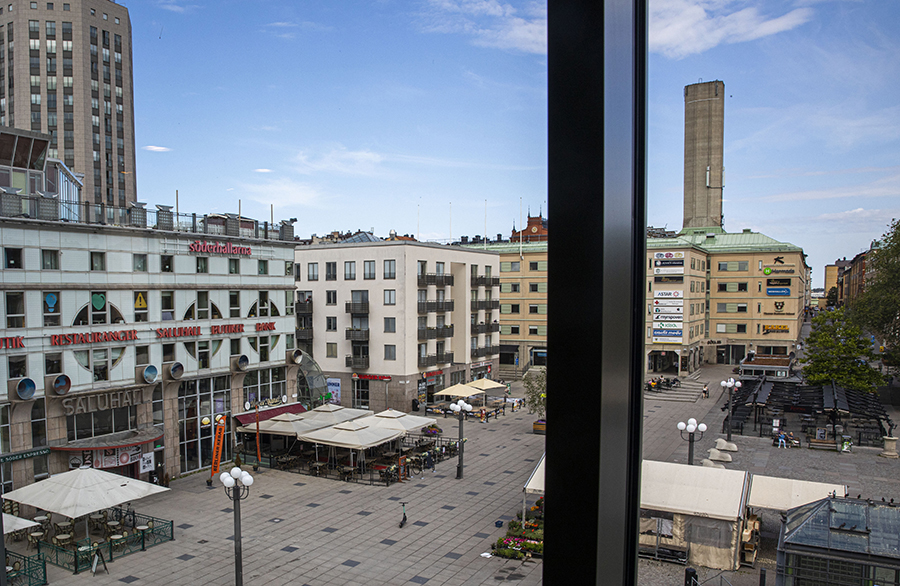Noise measurements show how Stockholmers follow corona rules

Researchers at the ECO2 Vehicle Design center at KTH have investigated how noise levels in central Stockholm were affected during the spring corona pandemic. The results indicate that the authorities' recommendations and restrictions have led to a significant reduction in transport and other activities in the city. The study helps to nuance the picture of how the Swedish "soft line" for dealing with the pandemic has worked in practice.
Already at week 10, a few days before the ban on public gatherings with more than 500 people came into force, the noise level around Medborgarplatsen in central Stockholm dropped. In the weeks that followed, the weekend noise continued to fall faster than the noise on weekdays, the researchers' study shows.
In connection with the Swedish Public Health Agency's recommendations week 11 and 12 on teleworking in the workplace and social restrictions in the field of education, the noise dropped further and landed at corresponding normal weekend levels.
From the last week of March, the noise levels of the weekends began to fall again proportionally more than on weekdays, which may be due to reduced entertainment activities from Stockholmers and the absent tourists. The noise on the weekends then stabilized at a level 3 dB lower than the previous year, which under the assumption that the noise is dominated by traffic corresponds to a halving of the site's normal traffic flow.
For weekdays, the level landed 1.9 dB lower than the previous year. This corresponds to the low noise levels that normally occur in the same places during the two most important Swedish major holidays, Christmas and Midsummer.
- The results indicate that Stockholmers have adapted significantly and in direct connection with the authorities' introduction of new restrictions and recommendations, something that is often questioned in the media, says Romain Rumpler, researcher in sound and vibration at KTH.
From the second half of April, noise levels began to increase slowly on both weekdays and weekends. This may indicate that Stockholmers gradually began to return to their previous activities, which was made possible when the authorities' recommendations were not mandatory. At the end of the study period, week 27, the noise reached the highest level. A level that was still at least 1 dB lower than normal compared to the same week in 2019, which, assuming that this noise is dominated by traffic, acoustically corresponds to a twenty percent reduction in the normal traffic flow.
- Our study also shows how relatively cheap technology, in the form of simple sound sensors, can be used to contribute to so-called "smart cities". This by providing important information about urban life, people and behavior, not least when new societal rules need to be introduced, says Romain Rumpler.
The study covers weeks 10 to 27 and has been carried out by KTH researchers Romain Rumpler, Siddharth Venkataraman and Peter Göransson. The research results are presented in the latest issue of the scientific journal Sustainable Cities and Society.
The study was funded by the Swedish Research Council, the ECO2 Vehicle Design Center and the EU programs Horizon 2020 (ECCENTRIC project) and EIT Urban Mobility (ZEUS project).
Text: Peter Ardell
For more information, contact Romain Rumpler on 073 - 461 24 97 or rumpler@kth.se .

